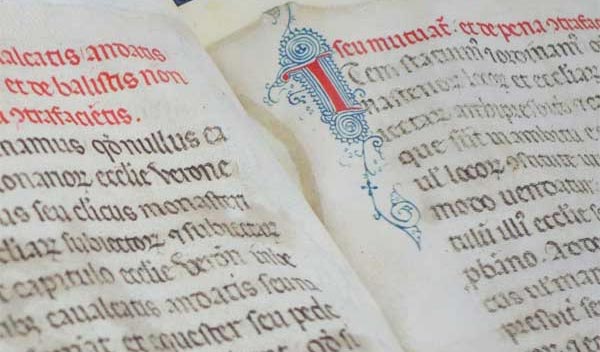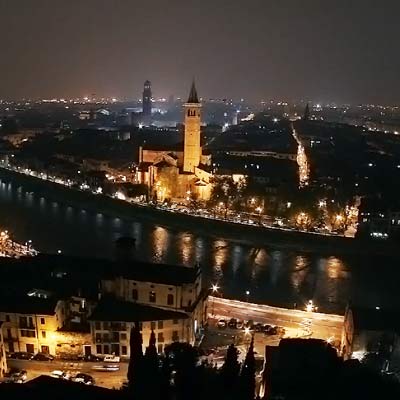Maffeiano Inscription Museum
The Lapidario Maffeiano in Verona is a museum of ancient inscriptions. It collects funerary stones, votive slabs, milestones, fragments of monuments and sculptures. The finds are mainly from the Roman and Greek era but there are also Etruscan, Paleovenetian and Arabic inscriptions.
It was founded in 1745 by Scipione Maffei, an illustrious literary and is one of the oldest public museums in the world.

Many of the inscriptions come from the Veronese territory. Some of them refer to people, facts of the past or monuments still existing today such as the Arena. An extraordinary tool to deepen the history, culture and even the simple everyday life of the past.
The Museo Lapidario Maffeiano is an unusual and evocative place but, if you are not you are not a scholar of classical subjects, it may be difficult to fully appreciate it, unearth the most significant finds and decipher them. This is why the presence of a tour guide becomes indispensable.
Oncoming Tours
Scipione Maffei

To understand the Lapidary Museum of Verona, it is necessary to better know its founder: Scipione Maffei.
A multifaceted figure in the Italian and European panorama. Military, philosopher, poet, playwright, historian, scientist, opera librettist, but above all a passionate fanatic of antiquities. He was an avid collector of ancient manuscripts and epigraphs, which he acquired in Verona, Italy or brought from all over the Mediterranean basin thanks to the possessions of the Republic of Venice, of which Verona was a part.
We are in the era of the Wunderkammer, a sort of private museum where erudite members of the nobility accumulated extraordinary objects for the pleasure of knowledge and to amaze their guests. In a short time the collection of antiquities of the Marquis Maffei became enormous.
The Accademia Filarmonica

Since the middle of the 16th century, a Philharmonic Academy existed in Verona. Its members were artists, musicians, and prominent social figures who dedicated themselves to the organisation of meetings and cultural activities, concerts and events. Scipione Maffei was a prominent member of the Academy and he worked for the realization of a theater inaugurated with Vivaldi's Fida Ninfa for which he had written the libretto. The Philharmonic Theater is still in operation today. The entrance to the theater consisted of a neoclassical facade with a pronaos of columns of giant order.
If you want to know more

Philarmonic Theater
Operas, operettas, concerts of internationally renowned artists in the fascinating eighteenth-century setting of the Philharmonic Theatre of Verona.
Scopri la FIND OUT »
Scipione Maffei asked and obtained permission to exhibit his vast collection of epigraphs in the space in front of it. The inscriptions and other finds were arranged in the inner courtyard and along the perimeter porticos, leaning against the wall or set into the balustrade so that both sides could be seen. The exhibition was designed by the painter and architect Alessandro Pompei from Verona.
Maffei, with a testamentary legacy, donated the collection to the city of Verona with a bond of inalienability. However, during the French domination, Napoleon stole some valuable finds. Most of them were then returned at the fall of Napoleon but some are still exhibited at the Louvre museum.
The prestigious classical high school of Verona is dedicated to Scipione Maffei.
In 1982, the architect Arrigo Rudi, a student of Carlo Scarpa, modernized the Museo Maffeiano, enlarging its spaces and rearranging the material according to chronological sections.
The Pronao of the Philharmonic Theatre
The exhibition area in the pronaos (colonnade) of the monumental entrance to the Philharmonic Theatre is one of the most interesting.
Some rests from the monumental area of the Roman forum of Verona are preserved.
A large column basement demonstrates the grandeur of the public buildings that overlooked what later became Piazza Erbe. It served as a model for the realization of the giant columns of the Filarmonico's facade.

A pillar decorated in bas-relief with scrolls of branches demonstrates the artistic quality of Roman buildings and was a source of inspiration for many Renaissance artists from Verona and beyond. For example, the bas-relief with three heroes lined up in different poses was used by Mantegna as a model for the three putti holding an inscription in the famous fresco for the Camera degli Sposti in Mantua.

Also on display here is the key to the arch of Jupiter Ammon. This was the access arch to the monumental area of the forum. Its remains can still be seen in situ hidden in the window of a store in Corso Porta Borsari. The head of Jupiter Ammon was characterized by twisted horns of a ram. Its presence protected against evil spirits.
Very valuable is also a headless statue perhaps of a winged victory from the area of the forum. The style is neo-attic that refers to the Greek sculpture of the fifth century.
Very interesting for the history of the city and of the Arena is also the inscription of Licinia, a Roman matron who married a venatio (fight with ferocious beasts) in the amphitheater and had fountains built there to allow the public to cool off on hot show days or to diffuse perfume in the malodorous environment of the fights. The donation for these works was made by testamentary bequest certified by a guardian as the Roman women, even if they had their own assets, to use them had to submit, at least formally, to a male authority. In this case the son.
Some of the inscriptions come from the Verona area, such as the funeral steles of the Sertorio brothers from the Val d'Illasi.
These are two Roman soldiers, members of the legion Claudia Pia Fedele, involved in a revolt of Illyria.
Quintus Sertorius Festus is represented on the stele with the scaly lorica and the insignia of command as centurion.
His brother Lucius Sertorius, on the other hand, was an insignia bearer.
There are also the inscriptions acquired by Maffei in Rome as well as the engraved plaques from common burials. Very interesting is the one of Socrates, perhaps a Greek slave, agitator, that is, driver of chariots in the circus. On the surface of the stone are engraved the goals of the circus.
Next to Socrates there is an inscription made by Statia Crescentina for her merchant husband. In it his wife remembers how they lived the life of a couple without quarrels and violence!
Then there is the inscription for Aemilia Irene, who died at the age of 26, made by her husband Aurelius Eutikes, a member of a theater company where he played the role of stupidus, or the jester. The wife is referred to as a dearest spouse. The inscription was found in Bologna.
The Ancient Greece Section
On the upper floor of the Museo Lapidario Maffeiano you can enjoy an exceptional view of Piazza Bra and the gates of the Bra.
This is where the finds of Greek origin are kept.
The most important piece is a fragment of a votive stele to Asclepius (Aesculapius in Latin) and his wife Hygieia, from the sanctuary that was situated on the slopes of the acropolis of Athens.
Fragments of this stele are scattered throughout Europe, some displayed in important museums.
The marble fragment depicts a dog, a horse, and at the bottom the prow of a ship, the vessel by which Asclepius arrived in Athens from Epidaurus.
In the center of the room there are fragments from the island of Thera (Santorini). It is the testament of Epikteta. It is one of the longest Greek epigraphs that have ever been found.
Info & Bookings:
+39 333 2199 645 info@veronissima.com P.I. 03616420232 C.F. CPPMHL74L13L781C

 IT
IT 日本
日本 DE
DE FR
FR 中文
中文 ES
ES









